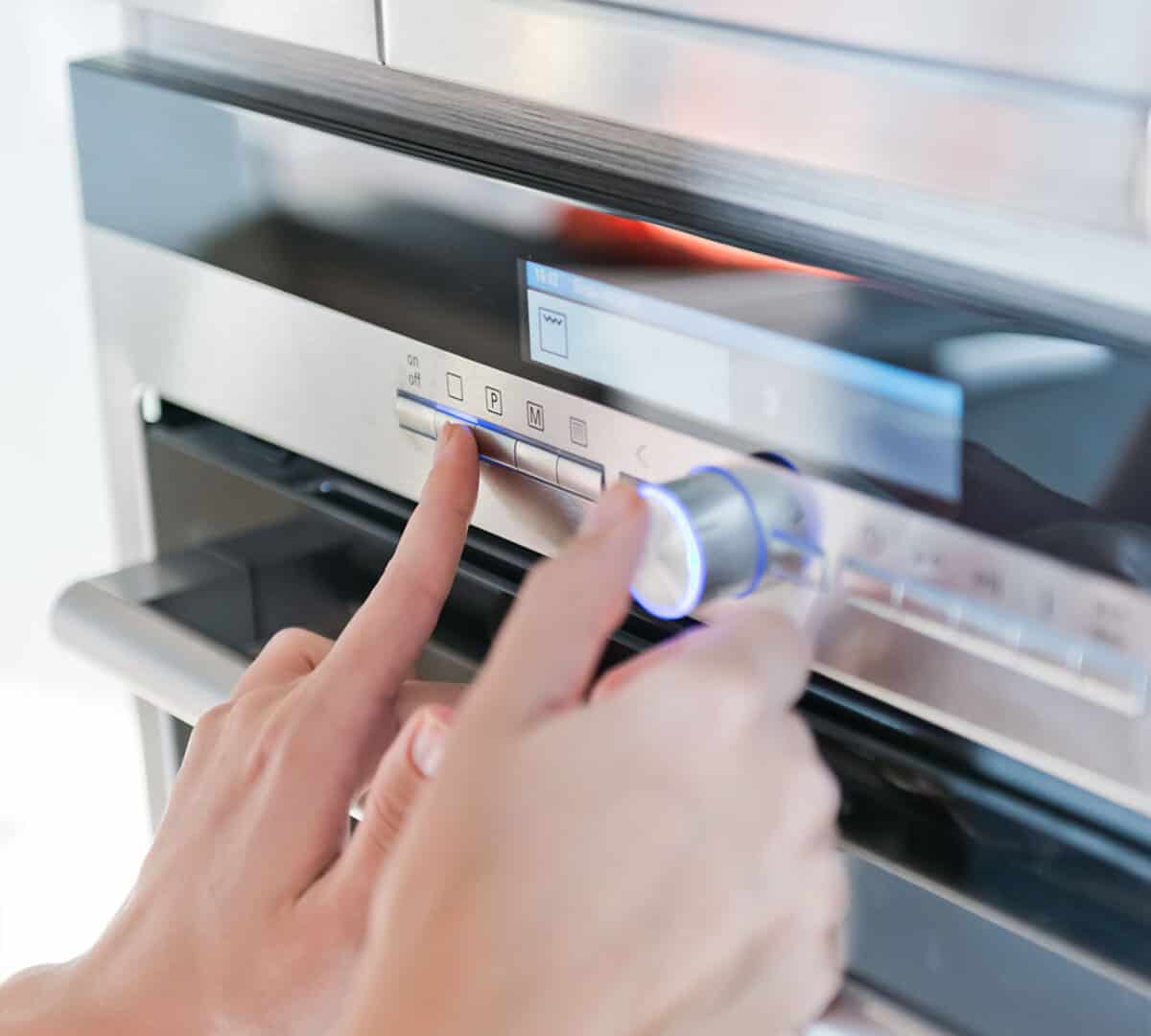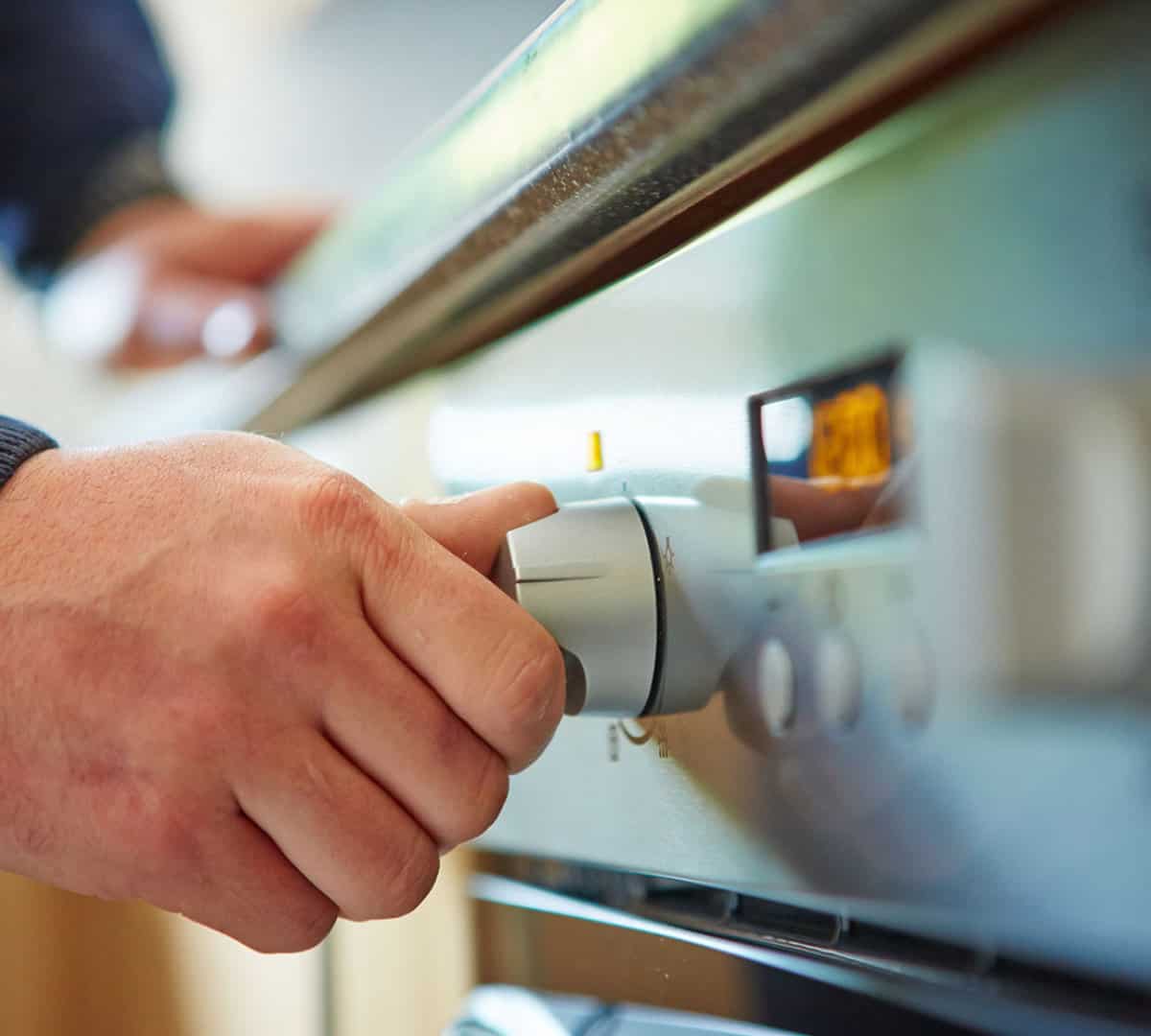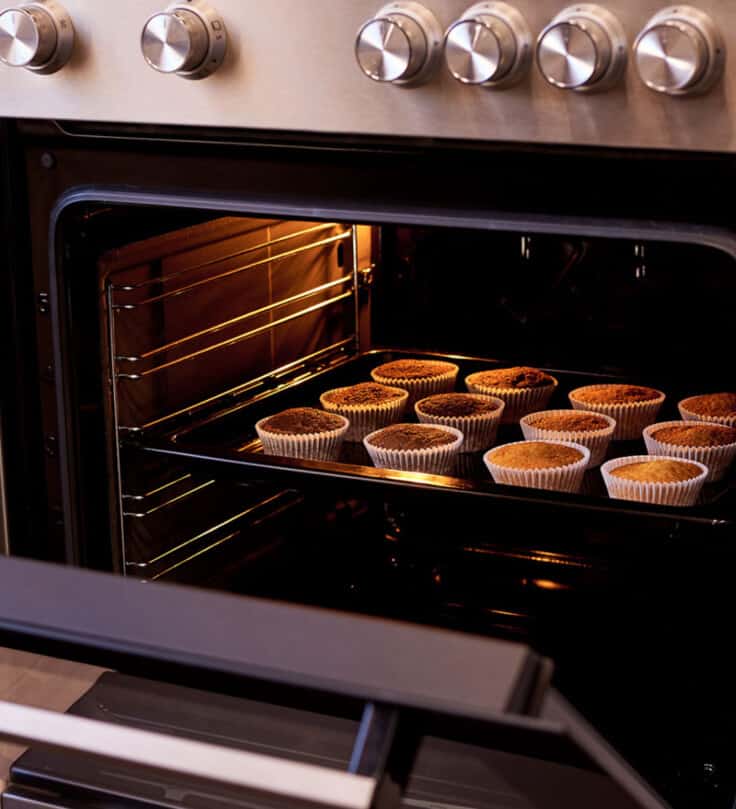Conventional and convection cooking may sound similar, but they are not created equal in the kitchen. Conventional ovens are the most common appliance in the average household, but many newer oven models have a convection setting available.
So what is a convection oven? Have you noticed the setting on your oven and you’re feeling confused? Or perhaps you’re shopping for a new range and considering a convection oven as an option? Let’s review the differences between convection vs conventional ovens and we’ll provide some tips and considerations.
Let’s start with the basics.
What is a Convection Oven?
Most electric or gas ranges have two heating elements at the top and bottom of the oven. The unique feature of convection cooking is a fan at the back of the oven that circulates the hot air throughout the cavity. This hot air circulation creates more even cooking as the heat is more likely to hit all parts of the food.
There is also an exhaust system that removes moisture from the oven. A drier environment creates a crispy crust on a roast, beautiful browning on baked goods, and a satisfying crunch on items such as breaded chicken. As an added plus, convection is an efficient cooking method and shortens overall cooking time.

Convection Oven vs. Regular Oven
You might be thinking, then why not always use convection cooking? But, there are some scenarios when cooking with a regular (conventional) oven is preferred. A regular oven has two heating elements that are at the top and bottom of the oven cavity. The bottom is usually the main heat source, while the top supplies additional heat to brown the top surface of food, or provides intense heat while broiling.
There is no fan or exhaust system in a conventional oven. Rack placement is key for successful conventional cooking! Turning the food or rotating the pan is often required as well to achieve even cooking.
When to Use Conventional Cooking vs. Convection Cooking
The type of recipe you are making dictates whether conventional or convection cooking is best. In some instances, the air circulation and moisture removal can dry out the food you don’t want to become too dry.
Therefore, we recommend choosing conventional cooking for delicate baked goods such as cakes, bread (including muffins or other quickbreads), tarts, and custards. However, pies, cookies, or similar pastries do well with convection cooking.
A convection oven is a great option for most other recipes including breaded chicken, roast turkey, and roasted vegetables. When in doubt, a majority of recipes are developed for conventional cooking directions, so it is always a safe bet to follow the directions of your recipe!
Consumer reports recommend checking the user manual for your range. Models can vary on the intended function of different convection modes (or even what they are called), so study your particular oven to inform your decision.
How to Convert Time and Temperature Based on Cooking Method
Most recipes or packaging include instructions for conventional cooking. A good rule of thumb, if you’d like to use convection cooking, is to reduce the recommended conventional temperature by 25 degrees. Be prepared to check the food earlier than the time instructed as it will likely cook faster! Some estimates suggest cooking time is 25-30% percent faster (even with the temperature reduction).
Conversely, if you only have convection cooking instructions and plan to use conventional cooking methods, we recommend you increase the cooking temperature by 25 degrees. Expect a slightly longer cook time.
We’d always recommend consulting your oven’s user manual here too for instructions on particular modes or convection settings.

Other Considerations for Convection Vs. Conventional Oven
Besides the cooking features, there are several other pros and cons to consider for convection vs. conventional baking.
Efficiency
We’ve touched on the time efficiency of convection cooking (which is a big benefit!), but that also results in better energy efficiency. The reduced temperature and cooking time add up to lower overall energy usage. Win!
Cost
As a general rule, convection ovens are more expensive than conventional ovens. The additional parts for the fan and exhaust system add additional cost, which increases the cost of the whole unit. Repairs of a convection range tend to be more costly as well.
Available Baking Tools
While it isn’t a strict requirement, for optimal performance, it is best to use pans with low sides for convection cooking. This optimizes the circulating air to reach the food. Lightweight aluminum, stone, ceramic, or glass (be sure it is oven-safe glass) are the best bakeware materials for convection cooking.
For most households, convection cooking is a great option to try. It can be a bit intimidating at first but is easily mastered.
FAQ
While you can’t fully replicate convection cooking with a conventional oven, try these tips when you’re making something where extra crispy is preferred:
– Elevate the food slightly on the cooking pan to encourage heat distribution on all sides of the food.
– Flip the food at least once, halfway through cooking to gain better heat distribution and better crispiness on all sides (if desired).
– Rotate the pan in the oven 180 degrees at least once during cooking to ensure even browning
Yes! Always preheat the oven as you would with conventional cooking (unless the recipe states otherwise).
Yes, the American version of the convection oven is what we refer to here, but a convection oven in Europe has a third heating element behind the fan (for a total of three heating elements). The European version is often referred to as a “true” convection oven.
A toaster oven is essentially a miniature countertop convection oven! It’s a great option if you don’t have a convection setting on your regular range or want to invest in a full-size convection oven. They can be great to get the benefits of convection cooking with smaller portions of food – faster cooking, a great crisp, and even browning.
